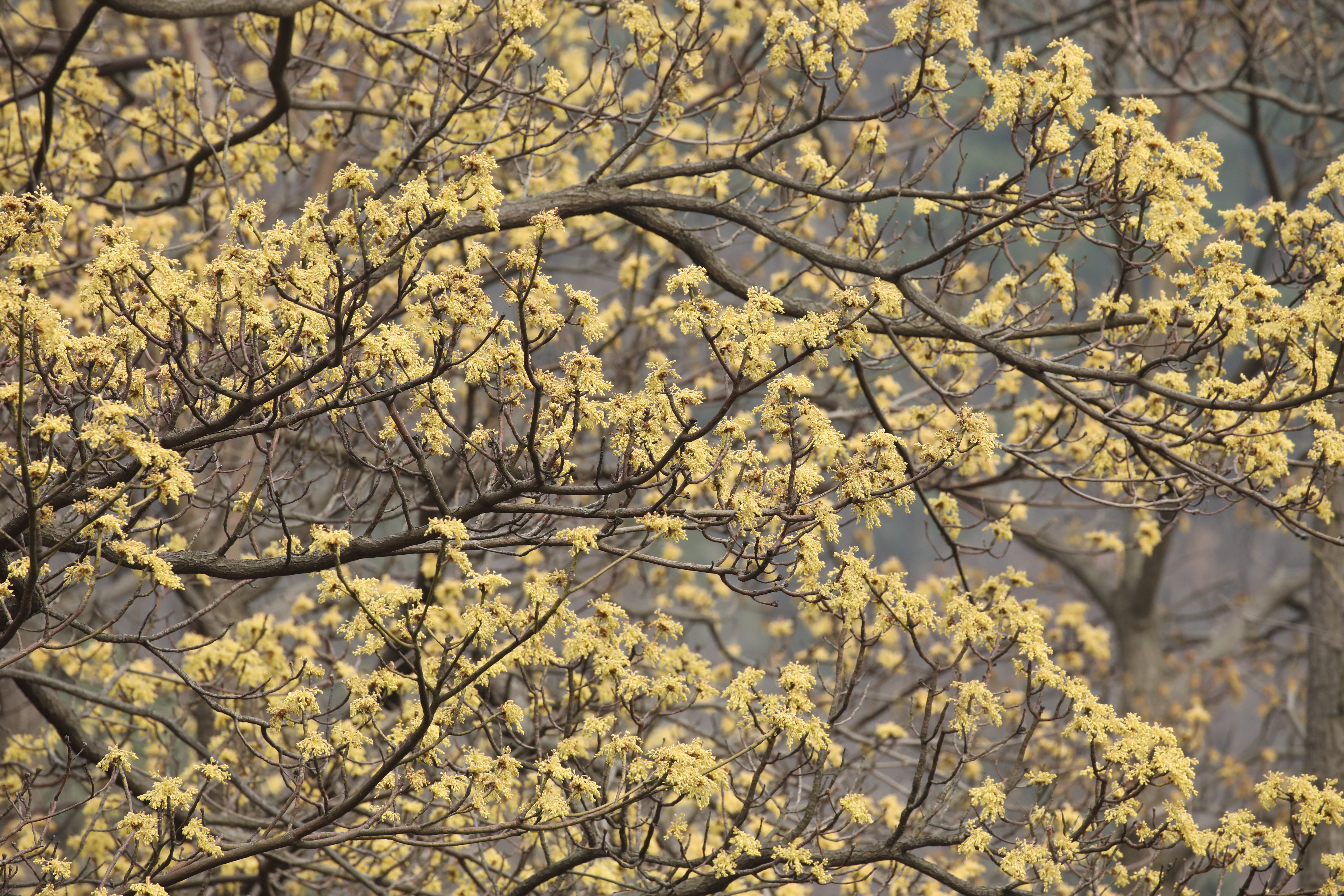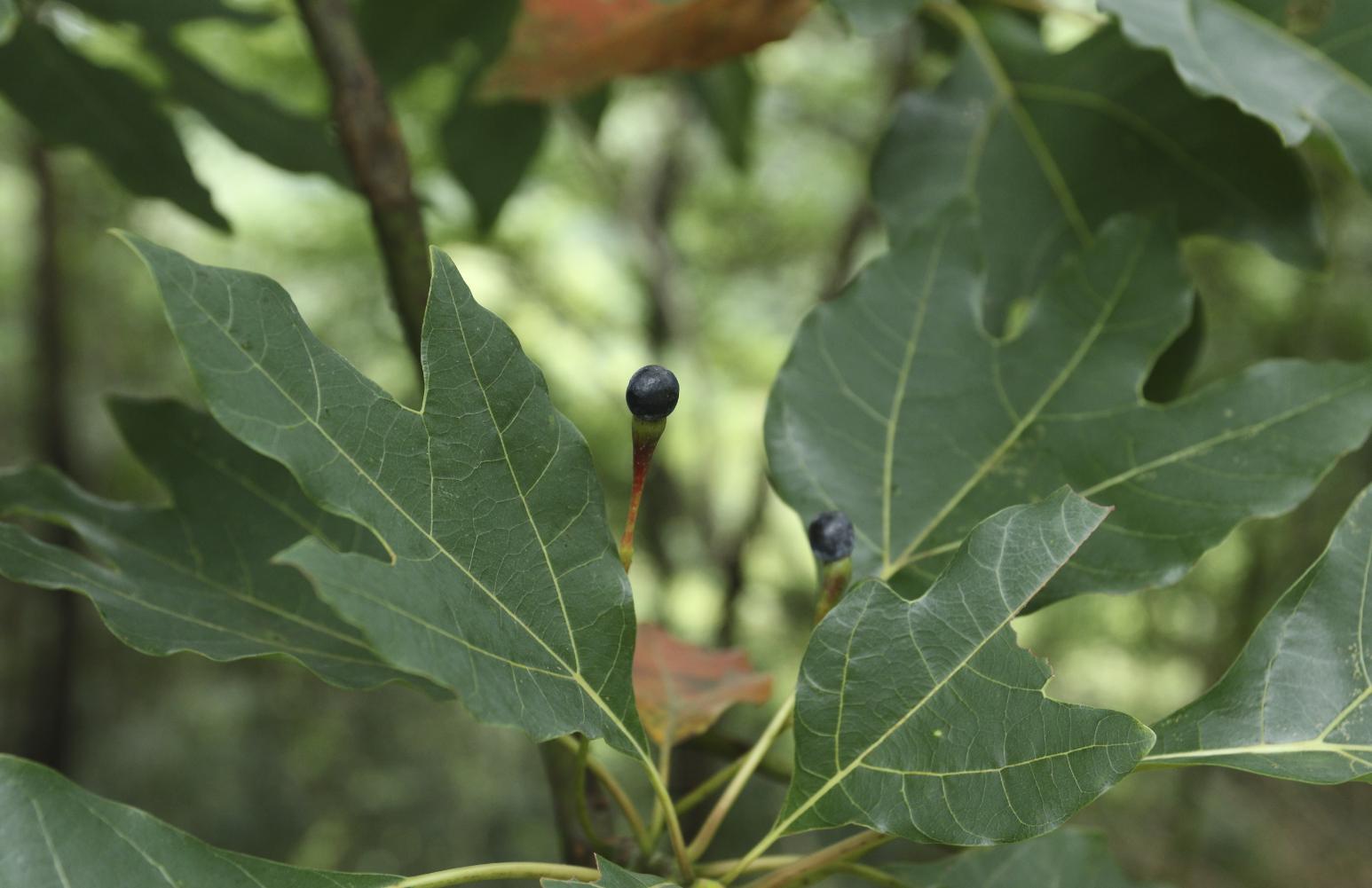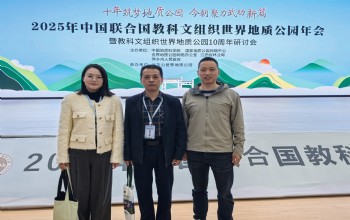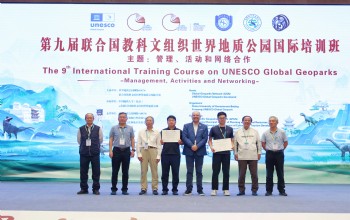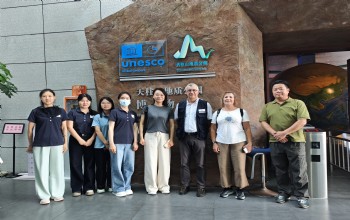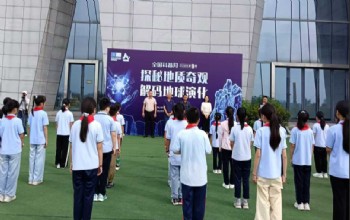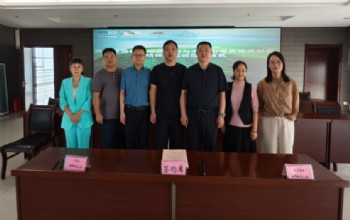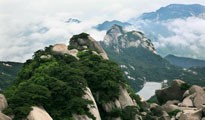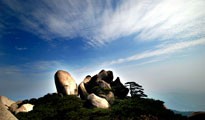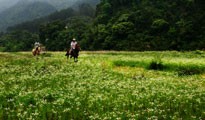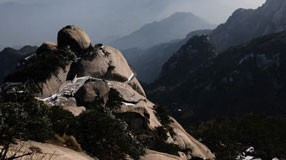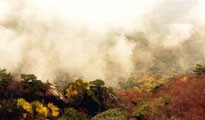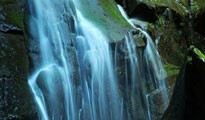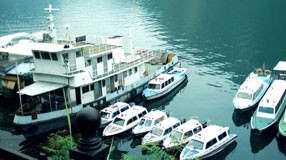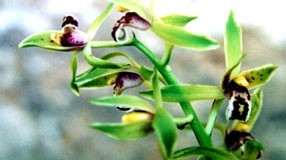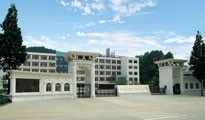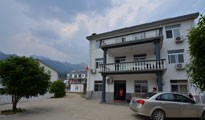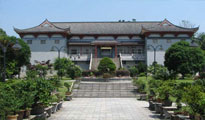檫木
分类:植物科普
檫木Sassafras tzumu (Hemsl.) Hemsl
檫木花枝
檫木果枝
落叶乔木,高可达35米,胸径达2.5米;树皮幼时黄绿色,平滑,老时变灰褐色,呈不规则纵裂。顶芽大,椭圆形,长达1.3厘米,直径0.9厘米,芽鳞近圆形,外面密被黄色绢毛。枝条粗壮,近圆柱形,多少具梭角,无毛,初时带红色,干后变黑色。叶互生,聚集于枝顶,卵形或倒卵形,长9-18厘米,宽6-10厘米,先端渐尖,基部楔形,全缘或2-3浅裂,裂片先端略钝,坚纸质,上面绿色,晦暗或略光亮,下面灰绿色,两面无毛或下面尤其是沿脉网疏被短硬毛,羽状脉或离基三出脉,中脉、侧脉及支脉两面稍明显,最下方一对侧脉对生,十分发达,向叶缘一方生出多数支脉,支脉向叶缘弧状网结;叶柄纤细,长(1)2-7厘米,鲜时常带红色,腹平背凸,无毛或略被短硬毛。花序顶生,先叶开放,长4-5厘米,多花,具梗,梗长不及1厘米,与序轴密被棕褐色柔毛,基部承有迟落互生的总苞片;苞片线形至丝状,长1-8毫米,位于花序最下部者最长。花黄色,长约4毫米,雌雄异株;花梗纤细,长4.5-6毫米,密被棕褐色柔毛。雄花:花被筒极短,花被裂片6,披针形,近相等,长约3.5毫米,先端稍钝,外面疏被柔毛,内面近于无毛;能育雄蕊9,成三轮排列,近相等,长约3毫米,花丝扁平,被柔毛,第一、二轮雄蕊花丝无腺体,第三轮雄蕊花丝近基部有一对具短柄的腺体,花药均为卵圆状长圆形,4室,上方2室较小,药室均内向,退化雄蕊3,长1.5毫米,三角状钻形,具柄;退化雌蕊明显。雌花:退化雄蕊12,排成四轮,体态上类似雄花的能育雄蕊及退化雄蕊;子房卵珠形,长约1毫米,无毛,花柱长约1.2毫米,等粗,柱头盘状。果近球形,直径达8毫米,成熟时蓝黑色而带有白蜡粉,着生于浅杯状的果托上,果梗长1.5-2厘米,上端渐增粗,无毛,与果托呈红色。花期3-4月,果期5-9月。
产浙江、江苏、安徽、江西、福建、广东、广西、湖南、湖北、四川、贵州及云南等省区。常生于疏林或密林中,海拔150-1900米。
本种木材浅黄色,材质优良,细致,耐久,用于造船、水车及上等家具;根和树皮入药,功能活血散瘀,祛风去湿,治扭挫伤和腰肌劳伤;果、叶和根尚含芳香油,根含油1% 以上,油主要成分为黄樟油素。四川乐山及湖南、安徽常有栽培。
Deciduous trees, up to 35 m tall, 2-5 m d.b.h. Bark yellow-green when young but gray-brown when mature, smooth, irregularly and longitudinally fissured. Branchlets reddish initially but blackish when dry, robust, suberect, ± angled, glabrous. Terminal buds large, ellipsoid, up to 1.3 × 0.9 cm; bud scales suborbicular, densely yellow sericeous outside. Leaves alternate, clustered at apex of branchlet, unlobed or 2- or 3-lobed; petiole always reddish when fresh, slender, (1-)2-7 cm, plano-convex, glabrous or sparsely hirtellous; leaf blade gray-green abaxially, green and opaque or slightly shiny adaxially, ovate or obovate, 9-18 × 6-10 cm, papery, glabrous on both surfaces or sometimes sparsely hirtellous especially on venation abaxially, pinninerved or triplinerved, basal lateral veins opposite, very developed, other lateral veins 5-7 pairs, midrib, lateral veins, and veinlets slightly conspicuous on both surfaces, lateral veins and veinlets anastomosing in arcuate form toward leaf margin, base cuneate, apex acuminate (but apex of lateral leaf lobes slightly obtuse). Raceme terminal, appearing before leaves, 4-5 cm, many flowered, pedunculate; peduncle less than 1 cm; rachis densely brown villous, subtended by late deciduous alternate involucral bracts at base; bracts linear to filiform, 1-8 mm, lowest one longest. Pedicel slender, 4.5-6 mm, densely brown villous. Flowers yellow, ca. 4 mm. Perianth tube very short; perianth lobes 6, lanceolate, subequal, ca. 3.5 mm, sparsely pilose outside, glabrous inside, slightly obtuse at apex. Fertile stamens 9, in 3 series, subequal, ca. 3 mm; filaments complanate, pilose; anthers ovate-oblong, 4-celled. Staminodes 3, ca. 1.5 mm, triangular-subulate, stipitate. Ovary ovoid, ca. 1 mm, glabrous; style ca. 1.2 mm; stigma discoid. Fruit subglobose, up to 8 mm in diam., blue-black and white waxy when mature, seated on red shallow perianth cup; stalk 1.5-2 cm, glabrous, gradually dilated at apex. Fl. Mar-Apr, fr. May-Sep.
Always growing in sparse or dense forests; 100-1900 m. Anhui, Fujian, Guangdong, Guangxi, Guizhou, Hubei, Hunan, Jiangsu, Sichuan, Yunnan, Zhejiang.
The wood is yellowish, finely grained, durable, and used for boat-and furniture-making. The roots and bark are used medicinally for treating traumatic injuries and rheumatic disorders. The fruits, leaves, and roots contain essential oil; the roots contain ca. 1%, and its main component is safrole.The wood is yellowish, finely grained, durable, and used for boat-and furniture-making. The roots and bark are used medicinally for treating traumatic injuries and rheumatic disorders. The fruits, leaves, and roots contain essential oil; the roots contain ca. 1%, and its main component is safrole.







